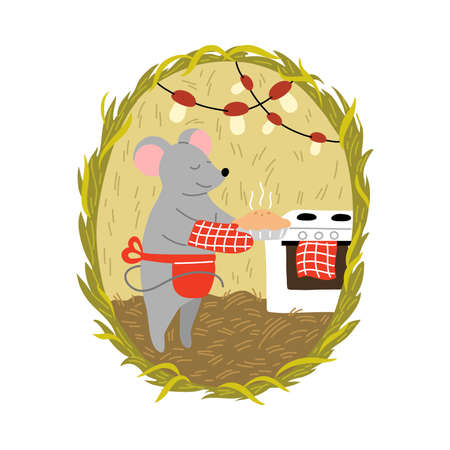Introduction to Edible Hedge Rows and Privacy Screens
If you’re looking for a way to add both function and beauty to your American yard, edible hedge rows and privacy screens made from fruit-bearing plants might be just what you need. Unlike traditional fences or ornamental hedges, these living barriers do double duty: they provide privacy and define property boundaries while also yielding delicious, homegrown harvests. As more homeowners seek sustainable landscaping solutions that offer value beyond aesthetics, incorporating edible plants into privacy screens is gaining popularity across the United States. This approach fits right in with American traditions of backyard gardening, self-sufficiency, and maximizing the productivity of every square foot of land. Whether you have a spacious suburban lawn or a compact urban lot, fruiting hedges can be tailored to fit your space and lifestyle. From blueberries and serviceberries in cooler northern states to figs and pomegranates in southern climates, there are options for nearly every region. In this article series, we’ll explore the benefits of edible hedges for privacy, property lines, and edible landscaping—helping you create a yard that’s as practical as it is inviting.
Choosing Fruit-Bearing Plants for Your Region
Picking the right fruit-bearing plants is essential when planning edible hedge rows and privacy screens. The U.S. has diverse climates, so what thrives in one region may struggle in another. Consider your USDA Hardiness Zone, local soil conditions, and common pests before making a selection. Below is a quick guide to help you match popular and hardy fruit varieties with different regions.
Popular Fruit Varieties by U.S. Climate
| Region | Recommended Fruits | Pest Resistance | Water Needs | Maintenance Level |
|---|---|---|---|---|
| Northeast & Midwest | Apple (dwarf), Serviceberry, Black Currant | Moderate to High | Medium | Low to Moderate |
| Southeast | Blueberry, Fig, Muscadine Grape | High | Medium to High | Low |
| Southwest & West Coast | Pomegranate, Feijoa (Pineapple Guava), Olive (for non-fruit privacy) | High | Low to Medium | Low |
| Pacific Northwest | Raspberry, Thornless Blackberry, Gooseberry | Moderate | Medium to High | Moderate |
Pest & Disease Considerations
Selecting varieties bred for disease resistance can save time and reduce chemical use. For example, ‘Liberty’ apple is scab-resistant and blueberries are generally low-maintenance if soil pH is correct. Always check with your local extension office or nursery for regionally adapted cultivars.
Water Requirements & Maintenance Tips
Drought-tolerant plants like pomegranate or feijoa suit Western states with dry summers, while blueberries need consistently moist, acidic soils found in the Southeast. Prune hedges annually for shape and airflow; mulch well to retain moisture and suppress weeds.

3. Design Principles for Effective Privacy and Productivity
Cover Layout Tips: Planning Your Edible Hedge Row
When designing a fruit-bearing privacy screen, start by mapping the area you want to shield. Consider sun exposure, wind direction, and property boundaries. Lay out your hedge row in a gentle curve if space allows; this creates a more natural look and increases the surface area for planting. Avoid straight lines unless you’re matching a formal landscape style. For suburban yards, hedges work best along fences, driveways, or as soft dividers between outdoor living spaces.
Recommended Spacing: Give Plants Room to Thrive
Spacing is critical for both privacy and productivity. Most fruiting shrubs and small trees need at least 3–6 feet between plants, depending on their mature size. Overcrowding reduces air flow and sunlight penetration, leading to disease issues and lower yields. For a dense screen, stagger two rows in a zig-zag pattern—this doubles your coverage without sacrificing plant health.
Layering: Build Height and Depth
Layering mimics nature’s way of maximizing space and productivity. Start with tall fruiting trees like serviceberry or elderberry at the back (or center if the hedge is freestanding). In front, use medium-sized shrubs such as currants or blueberries. Closest to the path or property edge, plant low-growing options like strawberries or creeping thyme. This tiered approach ensures full coverage from ground to canopy while boosting your edible harvests.
Plant Combinations That Work Well Together
Diversity is key for resilience and extended harvests. Combine early- and late-blooming varieties to support pollinators and ensure fruit throughout the season. For example, pair June-bearing raspberries with late-summer blackberries. Mix deciduous and evergreen species for year-round privacy—think evergreen huckleberry alongside pawpaw or gooseberry. Native plants often perform best, but many heritage apple or pear varieties adapt well across USDA zones 5–8.
Pro Tip: Think Beyond Fruit
Add herbs like rosemary, sage, or lavender at the hedge’s base. They deter pests, attract beneficial insects, and provide fresh flavors for your kitchen—all while filling in gaps for extra privacy.
4. Planting and Establishment Tips
Soil Preparation: Setting the Foundation
The success of your edible hedge or privacy screen starts with healthy soil. Begin by testing your soil pH—most fruit-bearing plants thrive in a range of 6.0 to 7.0. Amend heavy clay soils with compost and sand to improve drainage, while sandy soils benefit from added organic matter to retain moisture and nutrients. Remove all weeds and debris before planting, as competition can stunt young plants.
Step-by-Step Planting Techniques
- Mark Your Hedge Row: Use stakes and string to lay out a straight line or gently curved row, depending on your landscape design.
- Digging Holes: Space holes according to the mature width of your chosen species (see table below). Holes should be twice as wide as the root ball and just as deep.
- Plant Placement: Gently remove plants from their pots, loosen circling roots, and set them at the same depth they grew in the nursery. Backfill with amended soil, pressing firmly to eliminate air pockets.
- Mulch: Apply a 2-3 inch layer of mulch around each plant, keeping it a few inches away from stems to prevent rot.
| Fruit Plant | Recommended Spacing (inches) | Mature Height (feet) |
|---|---|---|
| Blueberry | 36-48 | 4-6 |
| Raspberry/Blackberry | 24-36 | 5-8 |
| Dwarf Apple/Pear | 48-72 | 8-12 |
| Gooseberry/Currant | 36-48 | 3-5 |
| Pawpaw/Serviceberry | 72-96 | 10-15 |
Irrigation for New Plantings
You’ll want to keep the soil consistently moist but not soggy during the first growing season. Drip irrigation or soaker hoses are ideal for hedges, as they deliver water directly to roots with minimal waste. Water newly planted shrubs 2–3 times per week for the first month, then reduce frequency as roots establish—always adjusting based on rainfall and temperature.
Early Care for Long-Term Success
- Weed Control: Hand-pull weeds regularly and refresh mulch annually to suppress new growth.
- Fertilization: Use a balanced, slow-release fertilizer once in early spring after plants leaf out; avoid high-nitrogen products that encourage excessive leafy growth over fruit production.
- Pest Monitoring: Check foliage weekly for signs of insect pests or disease. Address problems early using organic methods whenever possible—like neem oil or insecticidal soap—to protect pollinators and beneficial insects.
- Pruning: Lightly prune for shape after the first season, removing any dead or crossing branches to promote airflow and healthy structure.
The Bottom Line: Patience Pays Off!
A well-established edible hedge row takes a couple of seasons to fill in but will reward you with privacy, beauty, and delicious harvests for years. Invest the effort up front for long-term resilience and low maintenance down the road.
5. Maintenance and Harvesting Strategies
Keeping your edible hedge row or privacy screen healthy and productive takes a hands-on, seasonal approach. With the right care, you’ll enjoy both abundant harvests and a beautiful, thriving natural barrier.
Pruning for Health and Productivity
Regular pruning is essential for most fruit-bearing shrubs and trees. In late winter or early spring, remove dead, damaged, or crossing branches to promote air circulation and prevent disease. Shape the plants so that sunlight can reach all parts of the hedge; this encourages strong fruit set and even ripening. For American favorites like blueberries, blackberries, or serviceberries, annual thinning also helps manage plant size and keeps your living fence dense enough for privacy but open enough for easy picking.
Disease Management: Prevention First
A proactive approach goes a long way in keeping your edible hedge row healthy. Mulch well to suppress weeds and maintain soil moisture, but keep mulch away from the base of stems to avoid rot. Water at the soil level rather than overhead to reduce fungal issues. If you spot signs of disease—like discolored leaves or stunted growth—remove affected branches promptly and dispose of them (don’t compost diseased material). Rotate crops nearby each year if possible to minimize pest buildup. For organic gardeners, products like neem oil or homemade insecticidal soap can help with common issues like aphids or powdery mildew.
Harvesting Tips for Maximum Enjoyment
Most fruiting hedges require regular harvesting during their peak season to encourage continued production and keep wildlife from beating you to the bounty! Use gentle hands or small pruners to pick ripe berries or fruits without damaging next year’s buds. For larger hedges, consider a step stool or small ladder—but always prioritize safety. Enjoy some fruits fresh off the bush, and preserve extras by freezing, canning, or making jams so nothing goes to waste.
Year-Round Care Pays Off
Consistency is key—walk your hedge regularly to check for pests, prune as needed, and harvest at the right time. With these practical maintenance habits, your edible privacy screen will reward you with fresh produce and beauty through all four seasons.
6. Creative Uses for Your Edible Privacy Screen
Once your fruit-bearing hedge is established, it becomes much more than a simple privacy barrier—it’s a living, dynamic part of your family’s daily life. Here are some hands-on ways to make the most of your edible screen, from encouraging outdoor activity to bringing fresh flavors into your kitchen.
Kid-Friendly Snacking and Learning
Kids love picking their own snacks straight from the garden. Berries like blueberries, raspberries, or serviceberries are perfect for little hands and make healthy grab-and-go treats. Turn harvesting into a family ritual—kids can learn about plant growth, pollinators, and even basic food preservation as you snack together right off the hedge.
Seasonal Recipes and Homegrown Goodness
With seasonal abundance comes a great excuse to get creative in the kitchen. Fresh currants or gooseberries are perfect for homemade jams and jellies, while figs and mulberries add unexpected depth to muffins or salads. Host a “harvest day” each year where everyone helps pick fruit, then try out new recipes like fruit compotes, pies, or infused vinegars together. These shared activities turn your privacy screen into a source of family memories—and delicious meals.
Supporting Pollinators and Backyard Wildlife
Fruit-bearing hedges don’t just feed people—they’re also fantastic for bees, butterflies, and birds. Many native fruit plants provide nectar for pollinators in spring and vital berries for songbirds in late summer and fall. Consider adding a small water feature or birdhouse nearby to create a mini wildlife sanctuary right outside your window. Watching goldfinches or monarch butterflies visit your hedge brings another layer of enjoyment to your landscape.
Encouraging Outdoor Play and Relaxation
Your edible hedge row can help define play spaces or quiet nooks within your yard. Arrange seating nearby for story time or lazy afternoons under dappled shade. Let kids build forts with natural materials among the shrubs or set up a hammock where you can unwind surrounded by fragrance and greenery.
Celebrating the Seasons Together
Finally, use your living barrier as a way to mark the passing seasons—first blossoms in spring, lush harvests in summer and fall, brilliant foliage in autumn, and architectural branches in winter. Snap family photos in front of the changing hedge each year or host small gatherings to celebrate its bounty. With a little creativity, your edible privacy screen will be woven into the fabric of family life for years to come.

